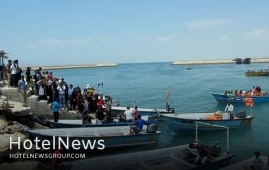
Bushehr province should invest a great deal of effort to develop its maritime tourism, the deputy tourism minister Ali-Asghar Shalbafian has said. TEHRAN - Busher province should invest a great deal of effort to develop its maritime tourism, the deputy tourism minister Ali-Asghar Shalbafian has said. “If the southwestern Bushehr province wants to develop tourism, it should focus on maritime sector,” the official said on Thursday. “The province needs to inform investors about its capacity in this sector, especially its favorable location on the Persian Gulf coast.” He made the remarks during a meeting with the provincial tourism chief Mohammad Hossein Arastuzadeh. The coastal region, ports, islands and coasts of the Persian Gulf are among Bushehr's greatest natural gifts, therefore, directing the investment capacities and enthusiastic investors to the maritime tourism sector will facilitate the growth of Bushehr as a coastal tourist destination, Shalbafian explained. For his part Arastuzadeh said that by using cruise ships and traditional Lenj boats in the region, maritime tourism has grown. Over the past couple of years, the Islamic Republic has made various efforts to exploit maritime tourism potential by developing hospitality infrastructures, diversifying sea routes, and drawing private sector investors along its vast southern coasts. Prosperous maritime tourism could help the county to meet its ambitious target of attracting 20 million annual tourists by 2025. It also keeps an eye on tourism developments in the Caspian Sea in the north. Back in February, the Ministry of Tourism and the Ministry of Transport and Urban Development signed a memorandum of understanding (MOU) to develop maritime tourism and make the best use of its potential in the southern and northern coasts of the country. Promoting the culture of using the sea as a tool to increase social vitality, development of coastal activities in the form of environmentally-friendly plans and programs, and creating the necessary grounds for cooperation and exchange of knowledge and information were also among the topics of the agreement. With over 6,000 years of history and significant monuments from the Elamite, Achaemenid, Parthian, and Sassanid eras, Bushehr is one of Iran’s most important historical centers. Besides its cultural heritage, beautiful beaches and lush palm groves make it an attractive destination for world travelers. The historical and architectural monuments of Bushehr include Islamic buildings like mosques and praying centers, mansions, old towers, castles, as well as gardens. When it comes to cultural attractions, there are many historical mounds in Bushehr including Tall-e Khandaq with Sassanid architectural style, Tall-e Marv located near an Achaemenid Palace, and Qajar era Malek al-Tojar Mansion. Qajar era Kazeruni Mansion, which has been inscribed on the World Heritage List, is another attraction that world travelers love to see among various ancient sites.
Create: Oct 16, 2021 Edit: Oct 16, 2021 Regional News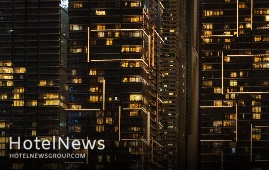
Recent weather disasters, social unrest and a heightened awareness of racial bias have prompted hoteliers to double down on their commitments to become better corporate citizens and do more to address environmental, social and governance (ESG) issues. These are moves toward a social good, sure, but also have ramifications on hotel company P&Ls. Marriott International, for one. It recently announced a commitment to reach net-zero emissions of greenhouse gases by 2050. The pledge follows the previous setting of goals by the massive global company to reduce single-use plastics, cut down on food waste by 50% and significantly amp up the diversity of suppliers, among other measures. InterContinental Hotels Group is another. Earlier this year it announced plans “to make a positive difference for our people, communities and planet over the next decade.” The company’s new commitments include a 15% “absolute reduction” of energy use and carbon emissions; a reduction of waste that will include the elimination of single-use items and a “prevent, donate, divert” plan for food waste; increased water conservation efforts; new programs to “improve the lives of 30 million people in our communities around the world” and, for employees, to “champion a diverse culture where everyone can thrive.” All of these measures benefit the public good and also have impact on a hotel’s ability to control expenses, particularly in regard to energy management. “Saving energy can—and will—impact profitability,” said Denise Naguib, VP of Sustainability and Supplier Diversity at Marriott. “For many properties, the second largest cost after labor is energy, and in some markets it actually supersedes labor, so this is a real cost that impacts the bottom line.” Energy By The Numbers Energy costs are mainly variable and there are ways to control this expense, which is of the moment now as the expense creeps back up. In U.S. hotels, the cost of electricity jumped to $4.31 in August on a per-available-room basis, compared to $3.35 in July 2020, according to HotStats data. Year-to-date August, hotels were paying $3.32 for energy, compared to $2.94 over the same period a year prior. Europe saw a similar rise, with August electricity at €6.26 compared to €8.26 in the same month last year, and €8.67 in the first eight months of this year compared to €8.26 in the same period a year ago. Small Steps, Big Rewards Operational changes large and small can help drive energy efficiency. “One of our hotels that had a high energy bill brought on an energy manager,” Naguib said. “That person found energy efficiencies and reduced the property’s energy bill by $1 million.” On a broader level, she added, properties need to empower engineers and others to find energy efficiencies, such as shutting a foyer light that’s kept on all day, deploying technology to regulate temperatures and electric usage throughout the space. Smart uses of food, such as saving the ends of vegetables for stews or making more scrambled eggs at the start of breakfast to avoid whipping up too many at the end of service, can have an impact. Energy purchasing decisions and the education of employees also can make a difference. That hands-on approach also can be used when working to make hoteliers’ purchasing choices more inclusive, Naguib said. “If any of our associates are working on RFPs or RFIs, we help them seek out diverse suppliers, such as women or minority-owned businesses. It adds more voices to the table for bidding opportunities.” Such shifts generate customer loyalty, IHG noted when it announced the company’s enhanced ESG policies.
Create: Oct 13, 2021 Edit: Oct 13, 2021 Hotel Management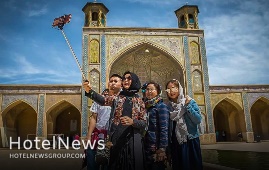
Though international tourism has revealed signs of a rebound as some destinations eased travel restrictions over the past couple of months, the lack of international coordination and slow vaccination rates in several countries and regions suggest it may need a longer time to bounce back. On the one hand, according to the latest edition of the UNWTO World Tourism Barometer, an estimated 54 million tourists crossed international borders in July 2021, down 67% from the same month in 2019, but the strongest results since April 2020. This compares to an estimated 34 million international arrivals recorded in July 2020, though well below the 164 million figure recorded in 2019. On the other hand, another research conducted by Oxford Economics on behalf of the World Travel and Tourism Council (WTTC) reveals that countries’ GDP is expected to increase only by less than one-third, as tourism is recovering even slower than expected. The research was based on the current vaccination rates globally, consumer confidence, and less stringent entry and travel restrictions in the world. However, prospects for September-December 2021 remain mixed, according to the latest UNWTO Panel of Experts survey, with 53% of respondents believing the period will be worse than expected. Only 31% of experts expect the point to better results towards the end of the year. The survey also shows that most tourism professionals continue to expect a rebound driven by unleashed pent-up demand for international travel in 2022, mostly during the second and third quarters. Almost half of all experts (45%) continue to see international tourism returning to 2019 levels in 2024 or later, while 43% point to a recovery in 2023. By regions, the largest share of experts pointing to a return to 2019 levels in 2024 or later are in Asia and the Pacific (58%). In Europe, half of the respondents indicate this could happen in 2023. West Asia is the most optimistic, with a full recovery expected by 2022. The sector needs leaders who can recognize ideas that will make a difference, who will innovate and back entrepreneurs and start-ups. As mentioned by the UNWTO Barometer, most destinations reporting data for June and July 2021 saw a moderate rebound in international arrivals compared to 2020. Nevertheless, 2021 continues to be a challenging year for global tourism, with international arrivals down 80% in January-July compared to 2019. Asia and the Pacific continued to suffer the weakest results in the period January to July, with a 95% drop in international arrivals compared to 2019. West Asia (-82%) recorded the second-largest decline, followed by Europe and Africa (both -77%). The Americas (-68%) saw a comparatively smaller decrease, with the Caribbean showing the best performance among world subregions. Meanwhile, some small islands in the Caribbean, Africa, and Asia and the Pacific, together with a few small European destinations recorded the best performance in June and July, with arrivals close to, or sometimes exceeding pre-pandemic levels.” Iran preparing for tourism rebound Iran considers reopening borders to foreign vacationers as its new tourism minister has said the government will soon scrap visa restrictions. Cultural Heritage, Tourism and Handicrafts Minister Ezzatollah Zarghami made the announcement last month following his conversations with President Seyyed Ebrahim Raisi, however, the minister did not specify the date upon which those regulations would be scrapped. According to some sources, fully vaccinated travelers would be embraced first under the updated regulations. The average of international travels to and from the Islamic Republic fell by 80 percent during the past Iranian calendar year 1399 (ended on March 20, 2021) from a year earlier. “During this period, 4,343,163 passengers entered the country, which included 3,030,464 Iranian passengers and 512,699 international travelers,” according to Arezou Ghaniun, an official with the Islamic Republic of Iran's Customs Administration. “From the beginning of 1399 to the end of it, we saw a significant reduction in passenger traffic to the country or vice versa in land, sea, rail and air borders, which were caused by various coronavirus restrictions.” Months of steep recession has taken its toll. Many travel insiders, hoteliers, and tour operators have faced big dilemmas such as bankruptcy, unemployment, debts, and the prospects of not being competitive on the international level. Panels of travel experts have mapped out new marketing strategies hoping Iran’s tourism would get back on its feet once again. For instance, the Head of the Iranian Tour Operators Association has said the international tourist flow to Iran will return to normal until 2022. Iran is potentially a booming destination for travelers seeking cultural attractions, breathtaking sceneries, and numerous UNESCO-registered sites. Under the 2025 Tourism Vision Plan, Iran aims to increase the number of tourist arrivals from 4.8 million in 2014 to 20 million in 2025. Domestic tourism as a propeller in COVID era The annual UNWTO Executive Training Programme, which was held in the Maldives from October 5 to 8, sharpened the focus on harnessing the power of domestic tourism to drive recovery and growth in destinations across Asia and the Pacific. Now in its 15th year, the event brought together representatives of 25 countries, with six (Iran, Sri Lanka, Afghanistan, Bangladesh, Mongolia, and Nepal) joining hosts in the Maldives to attend the training sessions in person. Reflecting the restart of domestic tourism ahead of international tourism, both across Asia and the Pacific and globally, the event focused on enabling destinations of all sizes to capitalize on this trend. Opening the event, UNWTO Secretary-General Zurab Pololikashvili stressed that, as tourism restarts in many parts of the world, “the sector needs leaders who can recognize ideas that will make a difference, who will innovate and back entrepreneurs and start-ups”. Confidence in travel rising sluggishly Such an enhancement was underpinned by the reopening of many destinations to international travel, mostly in Europe and the Americas. The relaxation of travel restrictions for vaccinated travelers, coupled with the progress made in the roll-out of COVID-19 vaccines, contributed to lifting consumer confidence and gradually restoring safe mobility in Europe and other parts of the world. In contrast, most destinations in Asia remain closed to non-essential travel. According to UNWTO Secretary-General Zurab Pololikashvili, there is a strong demand for international tourism, and many destinations have started welcoming visitors back safely and responsibly. However, the true restart of tourism and the benefits it brings remains on hold as inconsistent rules and regulations and uneven vaccination rates continue to affect confidence in travel,” Pololikashvili says.
Create: Oct 10, 2021 Edit: Oct 10, 2021 Regional News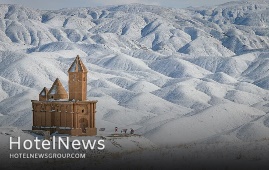
A project to restore and reinforce the ancient Saint John Church has begun in the village of Sohrol, near Shabestar city in East Azarbaijan province, the deputy provincial tourism chief has announced. The project involves the reinforcement of the church’s main structure and its foundation, as well as repairing the damaged parts, Alireza Quchi said on Saturday. Rehabilitation work has been ongoing on the historical structure for the past several years in order to make it stronger, the official added. Last year retaining walls for stabilizing soil around the monument were constructed to prevent it from being swept away by a landslide, he explained. Also known as Sohraqeh Church, the Armenian Catholic church was built in circa 5th century, but it was rebuilt on the older church foundation in 1840 by Samson Makintsev, a Russian general in the service of Iran during the Qajar era. The historical monument was inscribed on the National Heritage list in 1968. Iran is home to several ancient and historical churches. Christians, Jews, and Zoroastrians are the most significant religious minorities in the country with Christians constituting the bulk. Iranian Azarbaijan was the center of several ancient civilizations. It formed part of Urartu and later of Media. In the 4th century BC, it was conquered by Alexander the Great and was named Atropatene after one of Alexander’s generals, Atropates, who established a small kingdom there. The area returned to Persian (Iranian) rule under the Sasanians in the 3rd century CE.
Create: Oct 10, 2021 Edit: Oct 10, 2021 Regional News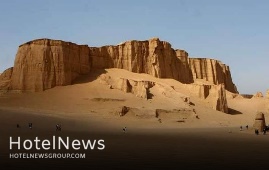
A clean-up project has recently been completed on Shahdad, part of the UNESCO-registered Lut desert, a local tourism official has announced. The project was carried out in collaboration with some eco-lodge owners nearby on the occasion of National Tourism Week (September 27-October 4), Hojjat Ebrahimizadeh said on Saturday. The project involved cleaning and collecting garbage left by some tourists in this area, the official added. Shahdad Desert receives a large number of tourists each year, making it imperative to adhere to hygienic principles so they can continue to enjoy its beautiful nature, he noted. Tourists are hence advised to collect their garbage from the region before they leave, he explained. Situated in southeastern Kerman province, Shahdad is home to shifting sands, salt plains, meteorite fields, and rocky terrain, which offers visitors breathtaking vistas and unparalleled serenity of the intact nature and wilderness. It has long been a destination for adventurers, nature lovers, off-roaders, and trekkers. The Lut Desert, widely referred to as Dasht-e Lut (“Emptiness Plain”), is a large salt desert encircled by the provinces of Kerman and Sistan- Baluchestan, and South Khorasan. It is the world’s 27th-largest desert and was inscribed on UNESCO’s World Heritage List on July 17, 2016. Seven years of satellite temperature data analyzed by NASA show that the Lut Desert is the hottest spot on Earth. Based on the research, it was the hottest during 5 of the 7 years and had the highest temperature overall: 70.7°C in 2005. The desert is also considered one of the top areas in the world for finding meteorites, thanks to its unique parameters. In recent years, significant finds have been made, with the efforts of national and international teams of researchers.
Create: Oct 9, 2021 Edit: Oct 9, 2021 Regional News
The Travel & Tourism sector’s continued sluggish recovery will see its year-on-year contribution to global GDP rise by less than one third in 2021, according to new research from the World Travel & Tourism Council (WTTC). WTTC, which represents the global Travel & Tourism private sector, says the recovery of the sector has been hampered by the lack of international coordination, severe travel restrictions and slower vaccination rates in some parts of the world which still hamper many regions of the world. In 2019, the Travel & Tourism sector generated nearly USD 9.2 trillion to the global economy, however in 2020, the pandemic brought Travel & Tourism to an almost complete standstill which resulted in a 49.1% drop, representing a punishing loss of nearly USD$ 4.5 trillion. While the global economy is set to receive a modest 30.7% year on year increase from Travel & Tourism in 2021, this will only represent USD 1.4 trillion and is mainly driven by domestic spending. The economic modelling was conducted by Oxford Economics on behalf of WTTC and calculated a baseline scenario based on the current global vaccination rollout, consumer confidence and relaxed travel restrictions in some in regions around the world. The research reveals that at the current rate of recovery, Travel & Tourism’s contribution to the global economy could see a similar moderate year on year rise of 31.7% in 2022. Last year, WTTC revealed the loss of a staggering 62 million Travel & Tourism jobs around the world and with the current pace of recovery, jobs are set to rise by only 0.7% this year. Similarly, research shows a more hopeful potential year-on-year jobs rise across the sector next year, by a positive 18%. Julia Simpson, WTTC President & CEO said: Our research clearly shows that while the global Travel & Tourism sector is beginning to recover from the ravages of COVID-19 there are still too many restrictions in place, an uneven vaccine rollout, resulting in a slower than expected recovery of just under a third this year. Last year, 62 million Travel & Tourism jobs were lost globally, and our data shows a rise of a meagre 0.7% this year. While next year is looking more positive in terms of the global economy and jobs, the current rate of recovery is simply not fast enough and is in the most part driven by domestic travel, which will not achieve a full economic recovery. If governments can start looking internationally and support Travel & Tourism with simplified rules to enable the safe return of travel, there is the opportunity to save jobs and boost economic wealth”. According to the research, the sector’s contribution to global GDP and the rise in jobs could be more positive this year and next, if the following measures are met: Allow fully vaccinated travellers to move freely, irrespective of their origin or eventual destination, removing complex tiered systems. The implementation of digital solutions which enable all travellers to easily prove their COVID status, so in turn speeding up the process at borders around the world. Recognition of all vaccines authorised by the World Health Organisation (WHO) and/or any of the Stringent Regulatory Authorities (SRA).Agreement from all relevant authorities that international travel is safe with enhanced health and safety protocols. The future could be brighter The research shows that if these four vital rules are followed before the end of 2021, the impact on the global economy and jobs could be significant. According to the data, the sector’s contribution to the global economy could jump by 37.5% – reaching USD 6.4 trillion this year (compared to USD 4.7 trillion in 2020). However, there is still hope if restrictions continue being lifted and with more international cooperation, governments could bring back nearly 19 million jobs before the year ends (up 6.8%). The trend continues into next year when the sector’s contribution to the global economy could see a year on year rise of 34%, reaching USD 8.6 trillion, close to 2019, a record year for Travel & Tourism. Similarly, jobs could surpass 2019 levels – up 20.1% year on year, to more than 349 million.
Create: Oct 9, 2021 Edit: Oct 9, 2021 International News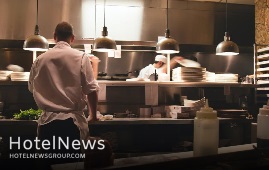
On 7 July, the Croatian Ministry of Tourism and Sports announced that it has presented a pilot project entitled “Reduce food waste, cook for your guests” at the Park Plaza Histria Hotel in Pula. This project has been created in collaboration with the Ministry of Economy and Sustainable Development, the Faculty of Geotechnics from the University of Zagreb, and the Fund for Environmental Protection and Energy Efficiency. Environmental impact of hotels During the presentation of this project, the Deputy Director of the Fund Alenka Košiša Čičin-Šain explained that hotels are one of the most important stakeholders in tourism; what is more, their operations have a significant impact on our environment. For this reason, they must reform their way of doing business and turn to more sustainable methods. Košiša Čičin-Šain further commented on the project’s aims noting: “We have been dealing with waste management in the Fund for years. Croatia has obligations that it must achieve in accordance with EU and national legislation, so by 2022, it is necessary to collect 40% of the mass of produced biowaste separately. This pilot project is aimed at reducing food waste, but also at proper separate collection and disposal of waste.” What are the goals of the project? Through “Reduce food waste, cook for your guests” the aforementioned bodies seek to encourage both staff and guests to be mindful of the way their actions impact the environment. More specifically, hotel guests must be inspired to correct their eating habits so that they do not fill their plates with more food than they are planning to consume. In this way and with these simple actions, people can contribute to the significant reduction of food waste. Maja Feketić from the Fund for Environmental Protection and Energy Efficiency further highlighted that hotels from other countries have taken up similar projects, achieving a 30% reduction of food waste. Feketić notes that this will not only help reduce the negative impact on the environment but it will also result in large financial savings. The “Reduce food waste, cook for your guests” pilot project will take place during the summer until the end of September in two Croatian hotels in Pula and Osijek. After September, its results will be made public so that people can understand how simple actions can make a difference.
Create: Jul 24, 2021 Edit: Jul 24, 2021 International News
South Florida’s iconic Boca Raton Resort & Club announces the most significant evolution in its history, and its new-again name —The Boca Raton. For over four decades, from 1944 to 1988, The Boca Raton name signified a luxurious lifestyle unmatched worldwide. Over the coming months, The Boca Raton will usher in an entirely new perspective on travel, A New Golden Era. A New Golden Era at The Boca Raton and The Boca Raton Club promises an unrivaled destination beginning with a $175 million Phase One physical transformation to be unveiled during Winter 2021/2022. There will be bespoke enhancements to every guest experience, from exceptional accommodations to dynamic culinary concepts and innovative programming. The Boca Raton has a remarkable history as an internationally recognized landmark and a private escape for in-the-know travelers,” said Daniel A. Hostettler, President & CEO of The Boca Raton. “A New Golden Era will pay homage to the resort’s storied past while introducing innovative new amenities and experiences that will inspire both members and guests, and define The Boca Raton as one of the world’s most preeminent luxury resorts and private clubs.” Five Distinct Hotel Experiences, One Iconic Resort. The Boca Raton will feature a collection of five hotels located Beachside and Harborside, each with its own personality and style. Beach Club: The oceanfront luxury escape features three pools set on a private stretch of golden beach. The hotel’s new Mediterranean dining concepts, Marisol and the lobby lounge, are curated by notable lifestyle guru Colin Cowie. Bungalows: Ideal for extended stays, this three-story residential hideaway features two-bedroom suites with full kitchens and furnished terraces and balconies. Tucked in a serene corner of the property surrounded by a lush landscape, the Bungalows offer a private pool and dedicated amenities. Yacht Club: The adult-only, all-suite luxury hotel embodies refined lakefront leisure. Elegant suites feature private balconies, and views of Lake Boca Raton and its yacht-lined promenade. Personal concierges and floor valets prepare every detail for the perfect escape. Reopening Winter 2021. Cloister: Stay where it all started amidst grand architecture, lush grounds and hidden gardens as an unforgettable backdrop. Located in the heart of the action, the resort’s original structure is just steps from the 18-hole golf course, Racquet Club and spa. The Cloister is being revitalized and will reopen with immersive experiences and rotating art collections. Reopening Winter 2021. Tower: Providing elevated perspectives for sophisticated travelers, the 27-story tower is undergoing a $45 million complete transformation by Rockwell Group. With extraordinary vistas of sparkling waterways, the all new luxury hotel will introduce flexible suite configurations—two to three bedrooms—artful touches, bespoke amenities and butler service. Opening first quarter 2022. A World of Flavor. From fine dining to waterfront bites, The Boca Raton is creating one of the most exciting culinary destinations in the country, including four signature experiences with Major Food Group (MFG). The Flamingo Grill, opening this month, offers a glamorous take on the mid-century American chophouse. Forthcoming restaurants include Sadelle’s, the inventive, perennially packed brunch institution with locations in New York and Las Vegas, and all new concepts exploring Japanese and Italian cuisine. Only at The Boca Raton. This winter, the resort will unveil Harborside Pool Club, a four-acre lakefront oasis featuring luxury cabanas, four pools, 450-foot lazy river, two three-story high slides, double standing wave, retail boutique, 7,100 square foot event lawn, 5,000 square foot kids club, and a teens lounge, as well as new waterfront dining options. The Boca Raton’s 40,000 square foot wellness oasis has unveiled a new name, Spa Palmera, and new treatments. This winter, Spa Palmera will showcase a refreshed design and additional programming. New one-of-a-kind experiences include a supercar racing adventure, perfect for thrill seekers. Fashionistas may opt for a curated shopping day with a personal stylist, while couples can spend the afternoon on a private boat, complete with snorkeling and live entertainment. Resort owners MSD Partners and Northview Hotel Group are stewarding the property into its new phase with an award-winning team of builders and creators. Visionaries include architecture and design firm Rockwell Group, landscape architecture firm EDSA, branding and marketing agency King & Partners, and GarciaStromberg—a firm of architects, designers and artists.
Create: Jul 17, 2021 Edit: Jul 17, 2021 International News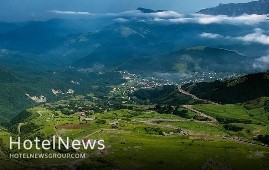
Countries are defined geographically and politically by their borders. Borders are fundamentally linked to tourism, as travel almost always entails crossing a political or another boundary, and borderlands are often the first or last areas of a country visited by travelers. Iran has a total of 5,894 kilometers of land borders with its neighbors Afghanistan, Armenia, Azerbaijan, Iraq, Pakistan, Turkey, and Turkmenistan. It also borders the Caspian Sea, Persian Gulf, and the Gulf of Oman. Several border cities dot Iran, owing to the vast size of the country’s land borders. The border cities of Iran, however, have limited tourist numbers due to their long distances from the country’s center, as well as the fact that they have not been properly promoted for foreign visitors. Here are some of the most beautiful border cities that have always gone unnoticed. Astara Astara, an Iranian border city and port, offers a wide range of tourist attractions. It is a major tourist and economic center on the west coast of the Caspian Sea, in the Gilan province. It is the last point of the border between Iran and Azerbaijan. Hakim Nezami School and Shindan Castle are two of the city’s historical sites. Astara Lagoon, Astarachay river, Qarasu river, Chelvand river, Darband river, Lavandvil river, and Espinas mountain are some of the city’s natural attractions. Among Iran’s border regions, Astara is the only area that has not experienced any tensions in the last 80 years, making it one of the safest. There is a great deal of tourism in this region because of the natural beauty and the weather. Jolfa Located in northwestern East Azarbaijan province, Jolfa borders the countries of Armenia and the Republic of Azerbaijan to the north. Jolfa has a semi-desert climate with warm summers and partly cold, moderate winters. The special importance of Jolfa is due to its historical monuments, strategic location, and appropriate geographical features, as well as its proximity to the commercial and industrial free zone of Aras (one of Iran’s most important commercial centers). Seyyed Abolqasem Nabati tomb, Duzal tower, Saint Stepanos Monastery, Nane Maryam church, ruined mill, Ushtibin village, St. Mary church, Baba Yaqub shrine, Ali Beyg fort, Jolfa historical bath and etc., are the most significant monuments and tourist attractions in this area. The region’s economy is fueled by the abundance of water resources, grasslands, and forest reserves, as well as its high potential for growth and industrialization. Minerals, agriculture, livestock, services, and scientific and training development also play an important role. There are a lot of cotton fields in this city, and weaving is the major activity of the locals. Jolfa people are Azeri and they speak in Turki Azerbaijani in their own local dialect. Maku Maku is located northwestern province of West Azarbaijan and enjoys a unique geographical and natural location. In a valley passes through which the Zangmar River divides Maku into two parts, the city is located 1294 meters above sea level. The city is surrounded by the Qarasu River and Turkey from the north, the Aras River (the Nakhchivan Autonomous Republic and Armenia) from the east, Khoy from the south, and Turkey from the west. Due to the surrounding stony mountains, this city has a moderate climate in winter and a hotter climate in summer. Mountainous landscapes, flourishing pastures, hot water springs, waterfalls, protected areas, and hunting grounds are some of the tourist attractions of this area. Maku is located on the main Tabriz-Bazargan road and has an excellent strategic location. Among the city’s most significant features is its role as the country’s only land border business and a link to Europe. As part of Maku’s economy, there is an industrial complex on the Maku-Bazargan road. Maku people rely on cross-border trade, agriculture, and animal husbandry for their livelihood. Zahedan The city of Zahedan is located in eastern Iran close to the Pakistani border. There are high lands around Zahedan, so it looks like a pit. The city is home to the mountains of Oshtoran Koh, Anjir Dan, Jico, Pir Khan, and Mulk-e Siah. Climates in this area are characterized by intense heat, aridity, and warmth. Zahedan consists of 4 parts: "Markazi", "Mir Jave", "Nosrat Abad", and "Korin", three cities, and eight rural districts. It is an academic, cultural, historical, and religious city that has a service structure. Zahedan enjoys a privileged geographic and border location which makes it an ideal place for trade with India thanks to its convenient location on the Afghanistan-Pakistan route. Pakistan’s railway enters Iran from the Mirjaveh border and Iran’s railway ends in this city. By being located among the Khorasan, Kerman, and Chabahar land routes, Zahedan is one of the Iran transit routes. Zahedan’s economy depends on agriculture in addition to trade. There are subterranean, spring, and river wells that supply the water this city needs. This area is full of color in its literature, clothing, and music. Zahedan’s cultural diversity results from migration. A good example of Baluch handicrafts is the klim bafi, needlework, seke dozi, and pottery. Zahedan architecture is influenced by Iran's ancient architecture due to its tropical weather. Baneh One of the border cities between Iran and Iraq, Baneh is located in the western province of Kordestan. The city is located 20 kilometers from the Iranian-Iraqi border, 60 kilometers southwest of Saqez and 70 kilometers southeast of Sardasht. The city is known for its large and natural oak forests. In 1984, Iraqi planes bombed Baneh and some nearby settlements during the Iran-Iraq war (1980-1988). Dul Arzan village, Shevi cave, Baneh Dam, Sorin complex are among the city’s tourist attractions, however, most of its reputation comes from its border malls and its status as a trade center. Local people speak Kurdish with Slemani accent.
Create: Jul 17, 2021 Edit: Jul 17, 2021 Regional News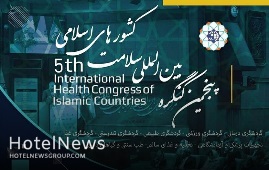
The 5th edition of the International Health Congress of Islamic Countries started in Tehran on Tuesday, aiming to find new opportunities for cooperation and development of health tourism among Muslim nations. Being held at IRIB International Conference Center, the congress is organized by the Health Tourism Development Center of Islamic Countries (HTDC) and supported by ministries, federations, institutions, and organizations in health tourism as well as private and governmental health service providers, the official website of the event announced. The three-day event has brought together seniors and experts from governmental and private sectors in the health tourism industry. The congress is being held in five specialized panel discussions of medical tourism, sports tourism, natural, wellness, and food tourism, medical and laboratory equipment, and nutrition and healthy food. The event started its official operations in 2015 with the aim of playing an effective role in developing economic relations and facilitating the networks between stakeholders in the health and health tourism industry. The developing health tourism industry is one of the most important fields of Iran’s travel sector, which is trying to prove its capabilities and capacities in attracting medical and health tourists to the country. Many domestic experts believe that medical tourism in Iran is a win-win opportunity both for the country and foreign patients, as they are offered affordable yet quality treatment services and the country gains considerable foreign currency. Iran’s two most popular medical tourist cities are Tehran and Mashhad, but the coronavirus outbreak has significantly reduced the number of travelers. Iran is one of the major destinations for health tourism in the region, and patients with 55 different nationalities, mostly from neighboring countries including Iraq, Kuwait, Bahrain, Qatar, Saudi Arabia, Oman, Pakistan, Afghanistan, Tajikistan, and Turkmenistan are seeking to use Iran’s services and facilities in this field. Iranian hospitals admitted nearly 70,000 foreign patients over the Iranian calendar year 1397 (March 2018 – March 2019) and it made an economic contribution of around $1.2 billion to the country, according to the medical tourism department at the Ministry of Health. In April 2018, the rotating presidency of the International Health Tourism Conference of Economic Cooperation Organization (ECO) was handed to the Islamic Republic for a three-year term. Mohammad Jahangiri who presides over a national center for developing health tourism said in May 2018 that Iran can annually earn $7 billion in medical and health tourism, though the sector now brings in only one-seventh or even lesser of the sum. The Islamic Republic has set its goals to exceed its yearly medical travelers to around 2 million in the Iranian calendar year 1404.
Create: Jul 17, 2021 Edit: Jul 17, 2021 Regional News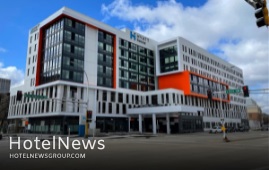
After nearly three years of planning and zoning, 20 months of construction, and a global pandemic that presented unique development challenges, joint-venture partners PEG Companies [PEG] and EKN Development Group [EKN] have formally opened Rochester, MN’s first completed opportunity zone project, the Hyatt House Rochester / Mayo Clinic Area. With In-Group Hospitality: A PEG Company [IGH] managing operations, the highly anticipated hotel hosted a ceremonial ribbon cutting celebration with the community this week. Located at 315 1st Ave NW, Hyatt House Rochester / Mayo Clinic Area brings 172 apartment-style, extended-stay suites to the area. The upscale hotel boasts fully equipped functional kitchens, comfortable living rooms featuring Hyatt’s signature Cozy Corners, spacious bedrooms, and stylish bathrooms. “This project reflects ongoing investment in our community, which is so important to the economic development and availability of employment in the area…” said Rochester Mayor Kim Norton. “The amenities of the hotel, as well as room offerings, support our community’s focus on being a place of care, hope and healing for our many visitors.” Hyatt House Rochester / Mayo Clinic Area became the first-ever Qualified Opportunity Zone [QOZ] project to break ground in the City of Rochester back in April 2019. The property previously belonged to the American Legion Post #92, which relocated after selling the site to the developers. “From the first day of discussions to acquire the American Legion property, and discussions with our neighbor, the world-renowned Mayo Clinic, EKN was welcomed by the community with tremendous support,” said Ebbie K. Nakhjavani, Founder and Chief Executive Officer at EKN Development Group. “The City Stakeholders and DMC’s well-structured framework for investment and development in Rochester contributed to making the Rochester Hyatt House a reality and exceptional success.” The new hotel continues to receive positive support from the community and Destination Medical Center [DMC], a statewide economic development initiative designed to position Minnesota as a global center for the highest quality medical care and to generate high-value jobs, new tax revenue, and businesses. Because of the significant role that Hyatt House Rochester / Mayo Clinic Area plays in the DMC initiative, public officials deemed construction of the hotel an “essential business” during the COVID-19 shutdown, allowing work to continue during the pandemic with proper health and safety protocols in place. “In many ways, the pandemic provided us with opportunities to rethink and improve our design,” explained Cameron Gunter, Founder/Chief Executive Officer at PEG. “We quickly adapted our plans to provide an enhanced hospitality experience equipped with the latest technology including touchless doors, an abundance of hand sanitizer stations, and other improvements to maximize the project’s ability to operate in a post-COVID-19 environment.” “We are excited for the opportunity to lead the hospitality industry out of these unprecedented times,” said Graydon Pearson, President of In-Group. “With a dedicated operations team that’s uniquely qualified to provide the safest, most welcoming and comfortable environment for our valued guests, our goal at Hyatt House Rochester / Mayo Clinic Area is to help everyone feel right at home.”
Create: Jul 1, 2021 Edit: Jul 1, 2021 International News
After nearly three years of planning and zoning, 20 months of construction, and a global pandemic that presented unique development challenges, joint-venture partners PEG Companies [PEG] and EKN Development Group [EKN] have formally opened Rochester, MN’s first completed opportunity zone project, the Hyatt House Rochester / Mayo Clinic Area. With In-Group Hospitality: A PEG Company [IGH] managing operations, the highly anticipated hotel hosted a ceremonial ribbon cutting celebration with the community this week. Located at 315 1st Ave NW, Hyatt House Rochester / Mayo Clinic Area brings 172 apartment-style, extended-stay suites to the area. The upscale hotel boasts fully equipped functional kitchens, comfortable living rooms featuring Hyatt’s signature Cozy Corners, spacious bedrooms, and stylish bathrooms. “This project reflects ongoing investment in our community, which is so important to the economic development and availability of employment in the area…” said Rochester Mayor Kim Norton. “The amenities of the hotel, as well as room offerings, support our community’s focus on being a place of care, hope and healing for our many visitors.” Hyatt House Rochester / Mayo Clinic Area became the first-ever Qualified Opportunity Zone [QOZ] project to break ground in the City of Rochester back in April 2019. The property previously belonged to the American Legion Post #92, which relocated after selling the site to the developers. “From the first day of discussions to acquire the American Legion property, and discussions with our neighbor, the world-renowned Mayo Clinic, EKN was welcomed by the community with tremendous support,” said Ebbie K. Nakhjavani, Founder and Chief Executive Officer at EKN Development Group. “The City Stakeholders and DMC’s well-structured framework for investment and development in Rochester contributed to making the Rochester Hyatt House a reality and exceptional success.” The new hotel continues to receive positive support from the community and Destination Medical Center [DMC], a statewide economic development initiative designed to position Minnesota as a global center for the highest quality medical care and to generate high-value jobs, new tax revenue, and businesses. Because of the significant role that Hyatt House Rochester / Mayo Clinic Area plays in the DMC initiative, public officials deemed construction of the hotel an “essential business” during the COVID-19 shutdown, allowing work to continue during the pandemic with proper health and safety protocols in place. “In many ways, the pandemic provided us with opportunities to rethink and improve our design,” explained Cameron Gunter, Founder/Chief Executive Officer at PEG. “We quickly adapted our plans to provide an enhanced hospitality experience equipped with the latest technology including touchless doors, an abundance of hand sanitizer stations, and other improvements to maximize the project’s ability to operate in a post-COVID-19 environment.” “We are excited for the opportunity to lead the hospitality industry out of these unprecedented times,” said Graydon Pearson, President of In-Group. “With a dedicated operations team that’s uniquely qualified to provide the safest, most welcoming and comfortable environment for our valued guests, our goal at Hyatt House Rochester / Mayo Clinic Area is to help everyone feel right at home.”
Create: Jun 28, 2021 Edit: Jun 28, 2021 International News
